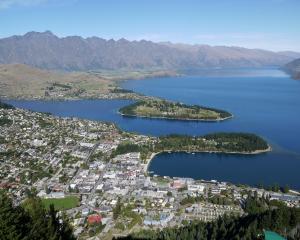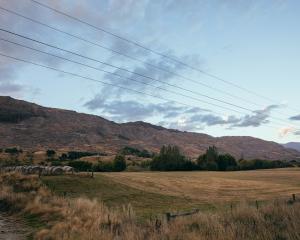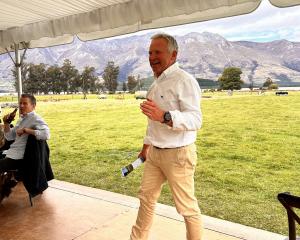At the time, Mr Mowat had been unemployed for 12 months and decided to go on holiday.
With a friend and her daughter in tow, Mr Mowat "decided to go on a cruise in a house bus".
After arriving in Arrowtown, the trio decided to walk into Macetown, where they set up camp for the night.
The next morning, a Nomad Safaris 4WD came past and fate intervened, Mr Mowat ending his conversation with a job offer.
"I hadn't had a job for over a year. I began driving for Nomad and I thought I would do something for Macetown."
Years later, he decided to reinstate a pedestrian bridge that had been removed following the Cave Creek tragedy.
In April 1995, 14 members of a party of students from the Outdoor Recreation course at Tai Poutini Polytechnic in Greymouth were killed when a viewing platform above Cave Creek, in the Paparoa National Park on the West Coast, collapsed.
Mr Mowat asked the Department of Conservation when the Macetown bridge was going to be replaced and the department replied "it wasn't going to be".
Four months later, Mr Mowat tried again, asking if he could build the bridge for the department with the help of an engineer.
An old bridge was found, restored and taken in to Macetown as the Millennium Project for Arrowtown.
Not long after the bridge was completed, Mr Mowat found the remains of another bridge and approached Doc again. The department allowed Mr Mowat to reinstate a second bridge, which was sourced from the former Clyde dam project and work finished last winter. However, access to that bridge was blocked by Soho Creek.
"Quite often, it's too high to get across the river on foot and we needed a bridge to get across safely.
"Initially, they were a bit sceptical," Mr Mowat said.
Iconic Adventures, organiser of the Motatapu adventure race, needed to be able to cross Soho Creek for the annual event.
"I found out... if there was a high water event they had to build a temporary bridge at a cost of $2000 and then pay another $1000 to have it removed."
Mr Mowat again contacted Doc and was given permission to construct the bridge, but was told to organise and pay for the resource consents and pay for the construction of the bridge himself.
He also contacted Tom Pryde, of Iconic Adventures, and discussed the idea of the Soho Creek bridge.
"It was just beyond me, but it wasn't beyond Tom.
"Slowly but surely we ground [them] down."
While Mr Mowat may have had the will, there was no way he could have completed the third bridge on his own.
Which is when fate intervened again.
Judge Kevin Phillips had expressed a desire to find more community work options for offenders in the Wakatipu - so Mr Mowat wrote to him.
"I said, 'I've got work if you can give me some workers.'
"They [Department of Corrections] gave me the workers. I call them my own little private army."
This year, the army has been working every weekend, driving up the river in arduous conditions and working on the third bridge in Mr Mowat's network.
After a huge effort, the logs required for the bridge arrived in Macetown. Mr Mowat then realised two gabion baskets were required for foundations. Two baskets were located at the Branches Station in Skippers. Mr Mowat had never filled a gabion basket and did not know where to start. Fortunately, the newest member of his "little army" did.
"We scoured Macetown... to find rocks... until we had enough to fill the gabion and then, a miracle happened.
"Rob Swale, the captain of the Tutuko, which runs out of Milford Sound, had a 12-tonne digger at Skippers.
"He had to drive the digger past where the bridge was going.
"During the night the fairies came, and the 12-tonne digger pulled a tree out and prepared the ground ready for the gabion baskets."
Both gabions were in place before "the fairies came again" and loaded the logs on to the bridge.
"Every weekend, my little army has been going in there, in -7degC and -8degC, working until it's dark. We got the bridge completed on the shortest, coldest day of the year, June 21.
"It's fantastic."
Mr Mowat said including grants and donations of time and money, the total cost of the three bridges had been $350,000.
However, he reckons he's not done yet.
"There's one more to go."












